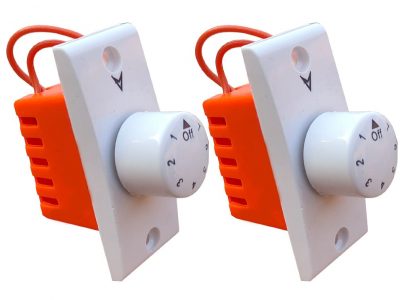Project Report For Fan Regulator
Introduction
Project Report For Fan Regulator is as follows.
A fan regulator is an important component that allows you to adjust the speed of your fan based on your demands. Traditional and electronic regulators are available. The process, as well as the circuitry that regulates the fan speed, is quite complex.
If you need a fan regulator to control the speed of your fans, The fan regulator allows you to manage and alter the speed of your fan. You can go through them all and compare them to get the finest solution for your home’s comfort. Fan controllers are typically specified as 220-240v and 50 Hz. They are available in a variety of designs, models, colors, and materials. Depending on your preferences and decor, you can have a step-by-step regulator or an open fan controller.

Types Of Fan Regulator
- Regulator Resistance: The most typical type of regulator in homes is the box-type regulator. To manage the ceiling fan’s speed, it features several contact points that correspond to different speed positions. A resistance value relates to each contact point. A wire wrapped resistor can have several taps provided, allowing the speed of the ceiling fan to be adjusted. Typically, these regulators are big in size. Although they could be economical, they are highly inefficient at slower speeds due to a substantial power loss. Additionally, they use more energy than the other varieties of regulators.
- Angle Controlled Phase Regulator: They are frequently referred to as “Dimmer Switches,” and they use semiconductor devices to change the voltage across the fan. They are more effective than resistive regulators because they use less power. However, linear speed control is absent and continuous speed control is possible. In addition, they generate a loud noise and are more costly than resistive regulators. higher failure rate because powered active equipment are more prone to failure.
- Inductive Regulator: To achieve the desired speed regulation, these employ an inductive coil with several contact points. The inductive reactance of the transformer is adjusted by tapping on the winding to achieve speed variation. The major disadvantage is that, like resistive regulators, they contribute to power loss. They are also expensive, big, and unattractive.
- Capacitive Regulator (CR): The capacitor is used to adjust the voltage across the fan via the Electronic Regulator. They also don’t generate any unpleasant noises, unlike the Phase angle-controlled Regulator. Capacitive Regulators and Electronic Regulators are often classified into two types: a) movable type capacitive regulators and b) step type capacitive regulators.
Get Completely Custom Bankable Project Report
Market Potential Of Fan Regulator
The fan regulator market is estimated to develop at a CAGR of 4.5% between 2021 and 2026.
The growing global emphasis on energy conservation and sustainability has influenced demand for energy-efficient appliances dramatically. Fan regulators are an efficient solution for optimising energy consumption since they allow users to regulate the fan speed based on their comfort needs. Electricity usage can be lowered by lowering the fan speed, resulting in cost savings and lower carbon emissions.
Fan regulators are used in a variety of applications. They are extensively used in homes, offices, hotels, educational institutions, hospitals, and a variety of businesses. Because fans are omnipresent in many situations, the adaptability of fan regulators provides a large market base. There is a requirement for regulating the speed and functioning of fans, whether they are ceiling fans, table fans, or exhaust fans, making fan regulators a crucial component in these situations.
Fan regulator design advances and innovation have created new market prospects. Smart fan regulators are being developed by manufacturers and can be controlled remotely via mobile applications or linked with home automation systems. These smart features provide customers convenience and personalization possibilities, making them an appealing option for modern homes and commercial environments. The integration of Internet of Things (IoT) technology with fan regulators expands their business potential even further.

